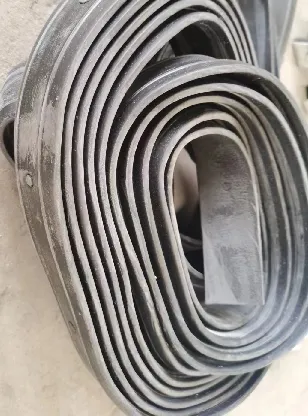loading...
- No. 9, Xingyuan South Street, Dongwaihuan Road, Zaoqiang County, Hengshui, Hebei, China
- admin@zjcomposites.com
- +86 15097380338
- Welcome to visit our website!
Innovative Applications of FRP Grating Panels in Modern Construction Projects
Understanding FRP Grating Panels Properties, Applications, and Benefits
Fiberglass Reinforced Polymer (FRP) grating panels have emerged as a superior alternative to traditional materials such as steel and wood in various industrial and architectural applications. Composed of a polymer matrix reinforced with fiberglass strands, these panels exhibit unique properties that make them ideal for demanding environments.
Composition and Manufacturing Process
FRP grating panels are manufactured through a process known as pultrusion. In this process, fiberglass roving is pulled through a resin bath and then through a heated die, creating a solid, continuous profile. This technique allows for high precision in the dimensions of the panels, ensuring consistency throughout production. The result is a lightweight yet strong material that offers excellent structural integrity.
FRP grating is available in various configurations, including molded and pultruded types. Molded grating features a surface texture that provides better slip resistance, while pultruded grating is known for its uniformity and strength. Both types are customizable in terms of size, color, and loading capabilities, making them versatile for different applications.
Key Properties
One of the primary advantages of FRP grating panels is their corrosion resistance. Unlike steel, which can rust and degrade when exposed to moisture, chemicals, or salt, FRP does not corrode, making it suitable for use in highly corrosive environments such as chemical plants, wastewater treatment facilities, and marine applications.
Additionally, FRP grating is low-maintenance. It does not require regular painting or treatment, which reduces long-term maintenance costs. Its lightweight nature also makes transportation and installation easier, often requiring less labor and equipment, thereby lowering overall project costs.
Another significant property of FRP grating is its high strength-to-weight ratio. It can support substantial loads while being significantly lighter than traditional materials. This quality makes it an excellent choice for applications where weight is a concern, such as elevated walkways or platforms.
frp grating panels

Applications
FRP grating panels are utilized in a wide range of applications across various industries. In commercial settings, FRP grating is often used for flooring in areas where slip resistance is crucial, such as in kitchens, swimming pools, and other wet environments. Its non-conductive properties make it suitable for electric utilities and data centers, preventing electrical hazards.
In industrial applications, FRP grating is widely used in petrochemical facilities, food processing plants, sewage treatment plants, and pulp and paper industries. Its ability to withstand harsh chemicals and environments makes it a preferred choice over standard materials. Additionally, its flame-retardant options enhance safety in scenarios where fire risks are present.
Architecture has also embraced FRP grating for its aesthetic appeal and functional benefits. Architects can utilize colored or textured grating panels to create visually appealing walkways and platforms while ensuring safety and durability.
Environmental Benefits
From an environmental perspective, FRP grating panels contribute positively. Since they are produced from materials that can be recycled, they can also be designed to minimize waste during production. The longevity of FRP grating means that it can last decades without needing replacement, reducing the consumption of resources over time.
Conclusion
In summary, FRP grating panels offer a range of benefits that make them an exceptional choice for various applications. Their corrosion resistance, low maintenance requirements, lightweight nature, and high strength make them more advantageous than traditional materials in numerous settings. As industries continue to seek innovative solutions to enhance safety, efficiency, and sustainability, FRP grating panels are poised to play a significant role in the future of construction and industrial design. With ongoing advancements in material science, their applications will only expand, providing effective solutions across an ever-growing spectrum of challenges.
-
The Rise of FRP Profiles: Strong, Lightweight, and Built to LastNewsJul.14,2025
-
SMC Panel Tanks: A Modern Water Storage Solution for All EnvironmentsNewsJul.14,2025
-
GRP Grating: A Modern Solution for Safe and Durable Access SystemsNewsJul.14,2025
-
Galvanized Steel Water Tanks: Durable, Reliable, and Ready for UseNewsJul.14,2025
-
FRP Mini Mesh Grating: The Safer, Smarter Flooring SolutionNewsJul.14,2025
-
Exploring FRP Vessels: Durable Solutions for Modern Fluid HandlingNewsJul.14,2025
-
GRP Structures: The Future of Lightweight, High-Performance EngineeringNewsJun.20,2025
